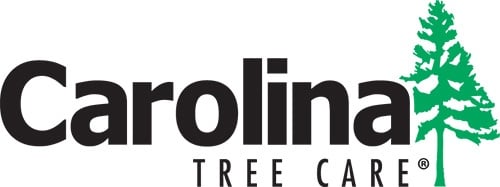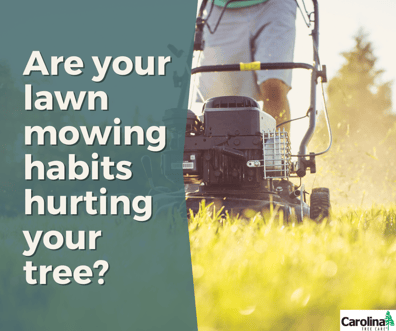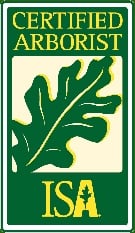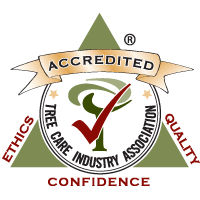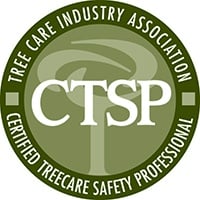When a tree is unhealthy, you may look to the natural environment to try to figure out what's going on. Is there a disease or bug attacking it? Is it getting enough water? Is there a soil problem?
While any of those issues, or a combination of them, could lead to a sick tree, trees in urban environments have something more to contend with — us!
For instance, when you mow your lawn, do you mow over surface roots? Are you hitting your tree's trunk while using your string trimmer?
That could be what's behind the sick tree in your Charlotte, NC yard.
Keep reading to learn more about how lawn power tools can hurt your tree and how to protect your tree from damage!
So, you hit your tree's trunk with the lawn mower. What's the big deal?
We get it — it's so easy to zone out while mowing the lawn and let your muscle memory take over. But if you're mowing close to your tree, snap out of it! Repeatedly hitting your tree's trunk or damaging its surface roots can lead to some real problems.
You see, right under the bark in those areas is the phloem, a pipeline that transports nutrients made via photosynthesis from the leaves to the roots. If this pipeline is damaged, your tree's roots won't get the nutrients they need to be strong and healthy. And those weak roots will have trouble sending water and minerals from the soil to the rest of the tree.
Trunk wounds that go through the bark can also leave your tree at risk for pest and disease infestation.
Damaging any protruding tree roots with a lawn mower or hitting them with a string trimmer also has negative consequences. Those surface roots are just as important as the roots underground, so stripping the bark from them decreases their capacity to support the tree and creates wounds that are vulnerable to pests and diseases.
How to protect your trees while caring for your lawn
If you've accidentally damaged the bark of your tree while tending to your lawn, don't worry. Trees can typically heal themselves if the damage is limited to 25% or less of the trunk or root's circumference.
So, what can you do to protect your trees from lawn power tools? Slowing down and mowing carefully as you get closer to your tree is one obvious thing you can do. You can also create a 3- to 5-foot buffer zone around your tree with mulch.
Your tree will benefit from mulch whether you're using it to prevent lawn power tool damage or not. Read more about the benefits of mulch here:
How to Install Mulch Like a Professional
To get at any grass growing around exposed roots or near your tree's trunk, you'll have more control if you do it by hand with a pair of grass shears.
If you do happen to injure your tree's trunk or surface roots while mowing, just remove the damaged bark carefully. Experts once thought wound dressing was helpful, but recent research has actually shown that it's not needed in most instances and does more harm than good, with a few limited exceptions.
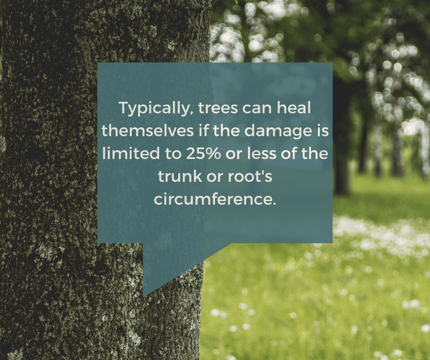
If handling a tree wound yourself makes you nervous, we can help! We can also offer guidance and treatments if your tree is already infested with bugs or disease.
Request a consultation with us today to get the wounded or sick tree at your Charlotte, NC property on the road to recovery!
Like what you just read?
Then you'll love this: 4 Headaches You Can Avoid by Grinding Your Stumps
